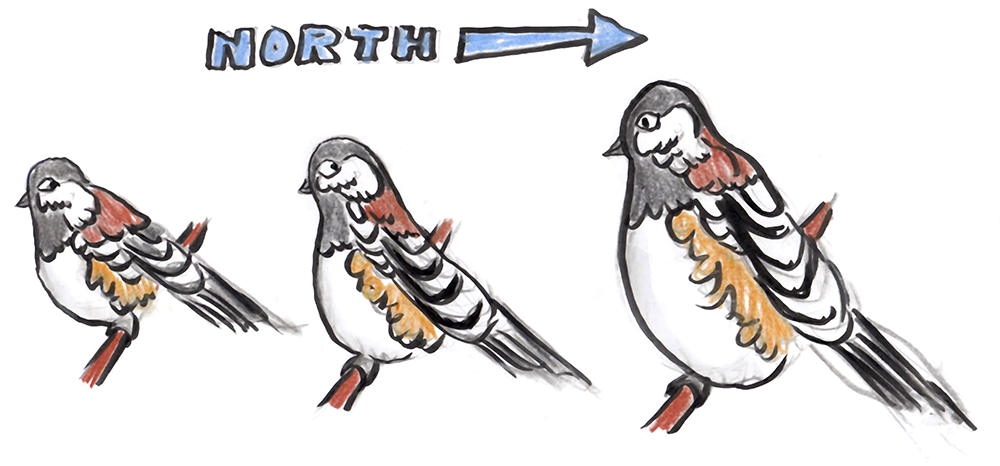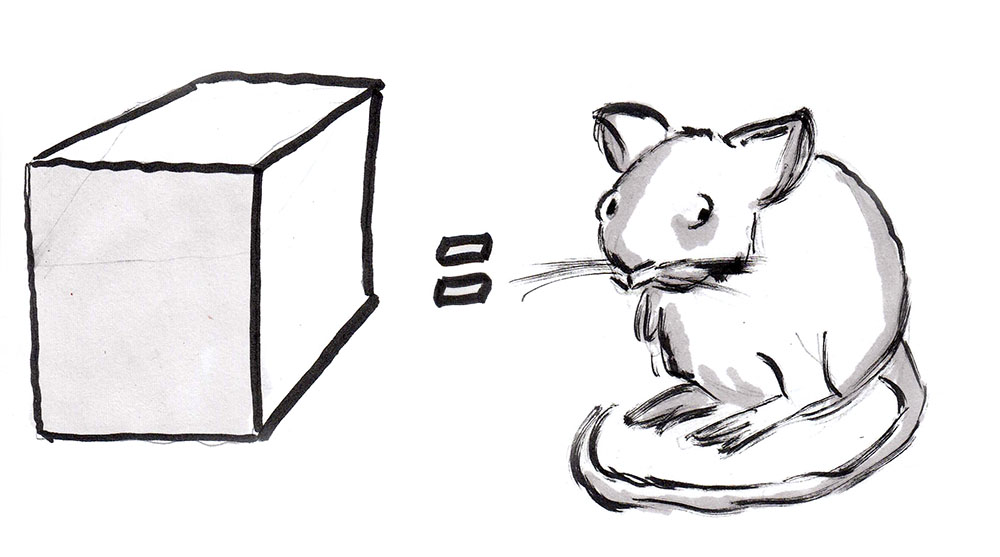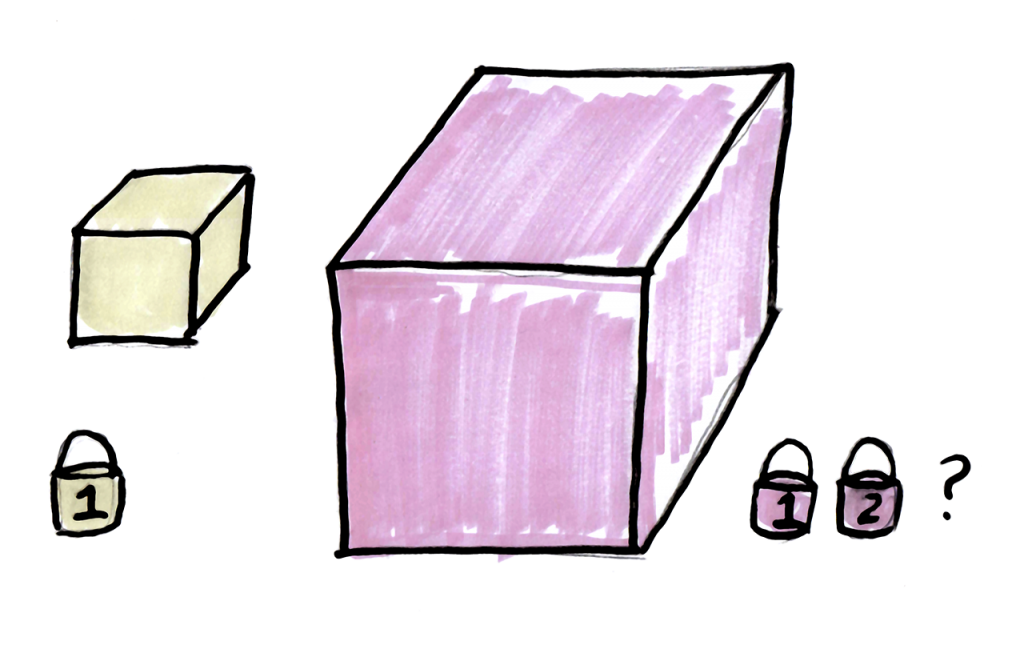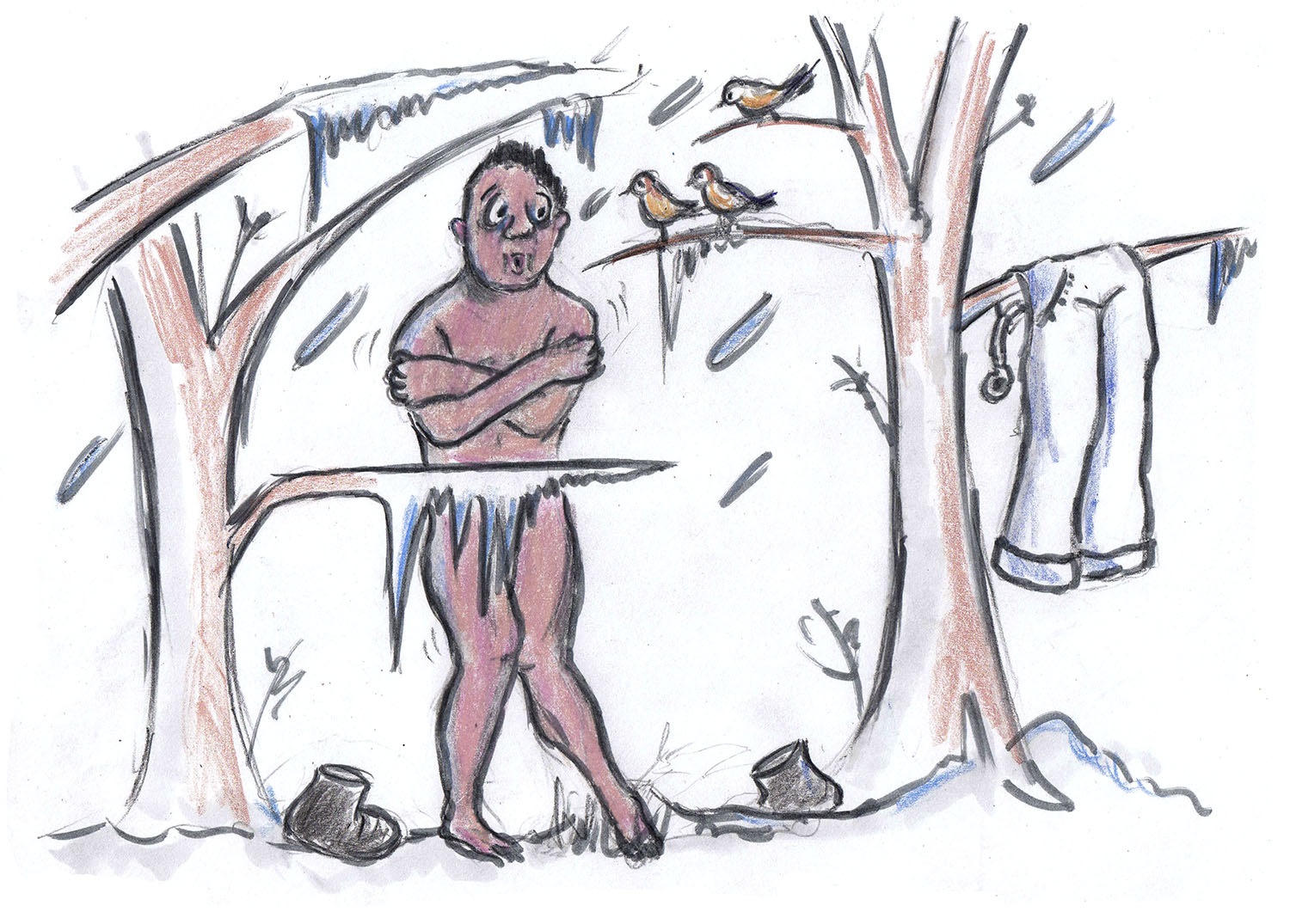It’s 20 below freezing (that’s -11C), a bitterly cold wintry day in a Tennessee forest, and biologist David George Haskell takes his clothes off. All of them. On purpose.
In Professor Haskell’s book, The Forest Unseen, he says he wanted to “experience the cold as the forest’s animals do, without the protection of clothes,” but the moment he’s naked, his body pulses with pain, his head hurts, and while he’s standing there shivering, he notices a little gang of Carolina chickadees gathered right next to him, perched on trees. They seem totally comfortable, feathered as they are. He looks at them, they at him, and then, embarrassed at his growing numbness, he decides, ‘enough’, puts his clothes back on, and on his way home, totally casually, as if everybody knows this, he says something that made both of us go, “What??”
The Chickadee Mystery
Chickadees, he says, do an odd thing. They change size as they move north and south. Not the individuals. But if you go 600 or so miles south, to Florida, the chickadees down where it’s warmer, tend to be smaller. Tennessee chickadees are, on average, about ten to twenty percent larger than Florida chickadees.
But reverse direction and head 600 miles north, up to Maryland, or further up to Massachusetts and even Maine, and you’d find a closely related species, the black-capped chickadee, which, says David, “is ten percent larger again”.
And this isn’t just a chickadee thing. It’s true of bats, rabbits, hares, goats, gazelles, deer, moose, hyenas, dogs, cats, mongooses, possums, kangaroos, monkeys. If you see a squirrel outside your window, and then imagine seeing that same species of squirrel some 500 miles north, chances are it’s bigger up there, smaller down south (assuming you are reading this in the northern hemisphere).
This pattern isn’t universal. It governs only about two-thirds of mammal species, and bird experts argue how well it applies to birds. But it isn’t a fluke either. It seems that for some reason, as animals move toward the poles, nature likes them bigger. As animals head to the equator, nature likes them smaller.
With so many different-sized, different-shaped, different-looking critters all around us, it’s a little surprising to imagine that nature has a hidden rule or secret pattern that governs so many of them. Why, a chickadee might ask, would this be?
We wondered too.
Turns out scientists have a name for this phenomenon: “Bergmann’s Rule”, after the German biologist who described it in 1847. To see how it works, let’s go back to our wintry forest, but this time instead of a naked biologist and a chickadee, we’ll feature two mice. One big, one little. (Please excuse Robert’s drawings. His mice are never quite alike, and sometimes look alarmingly like bears. We like to think of them as mice drawn by a moody artist.)
Just as before, it’s 20 degrees below freezing, and both mice are very, very cold (though for some mysterious reason they’re unable to burrow underground to get warm.)
And, being of a somewhat morbid mindset, these mice begin to wonder, which one of them is going to freeze to death first.
The Question
The big mouse thinks it’s not going to be him.
“You are smaller and more fragile,” he said to his little friend, “so you will freeze before I do. What’s more,” he said, trying not to look too pleased as gazed down at his round rump, his chubby legs, his big, soft tummy, “I have more meat.”
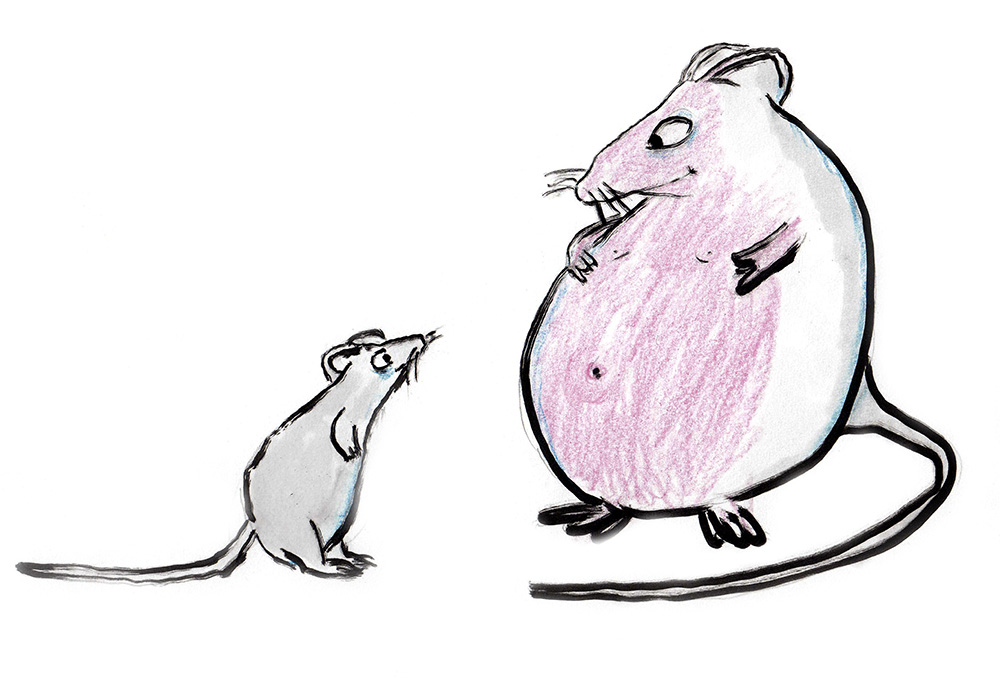
“And all that meat is made out of trillions of cells, each one quietly burning food and giving out heat, like a tiny furnace. So overall, I’ve got a bigger furnace than you. I’m going to stay warmer for longer, and so I will last longer. I will outlive you.”
The little mouse looked up at him and said, “I think that you’ve forgotten something. You may indeed have more meat, but you also have more skin, and skin leaks heat. Because you are warm blooded, inside you it’s 98 degrees. But outside you it’s 20 below freezing and snowing,” and then resting his head on the bigger mouse’s back, he said, “this humongous back of yours is like a leaky window. It’s radiating heat…”
“…and while it’s true you have a bigger heater on the inside, because you’re large on the outside, you will leak so much more than me. You, my big friend, are going to freeze first. I’m afraid that’s how it’s going to be.”
The two mice stared at each other. Which of us, they wondered, was right? Will the little mouse run out of heat first? Or will the bigger mouse, with more surface area, leak even faster?
The big mouse rubbed his pudgy paws on his warm pudgy stomach, thought for a while, and then smiled. With his paw, he traced out some square shapes in the snow.
The Answer
“I think I figured this out,” he said quietly, casting a sad glance at his little friend. “It’s true that being bigger I have more surface than you do. But I think I can show you that though you are teeny, you are leakier than I am.”
“Let’s, for the purposes of analysis, think of ourselves as simple shapes, and this,” he said, drawing a cube, “is you.”
The little mouse had never thought of himself as a cube before. “As for me,” said the big mouse, “I’m going to be twice your size – twice as wide, twice as long, and twice as tall”, and he drew a second, bigger cube.
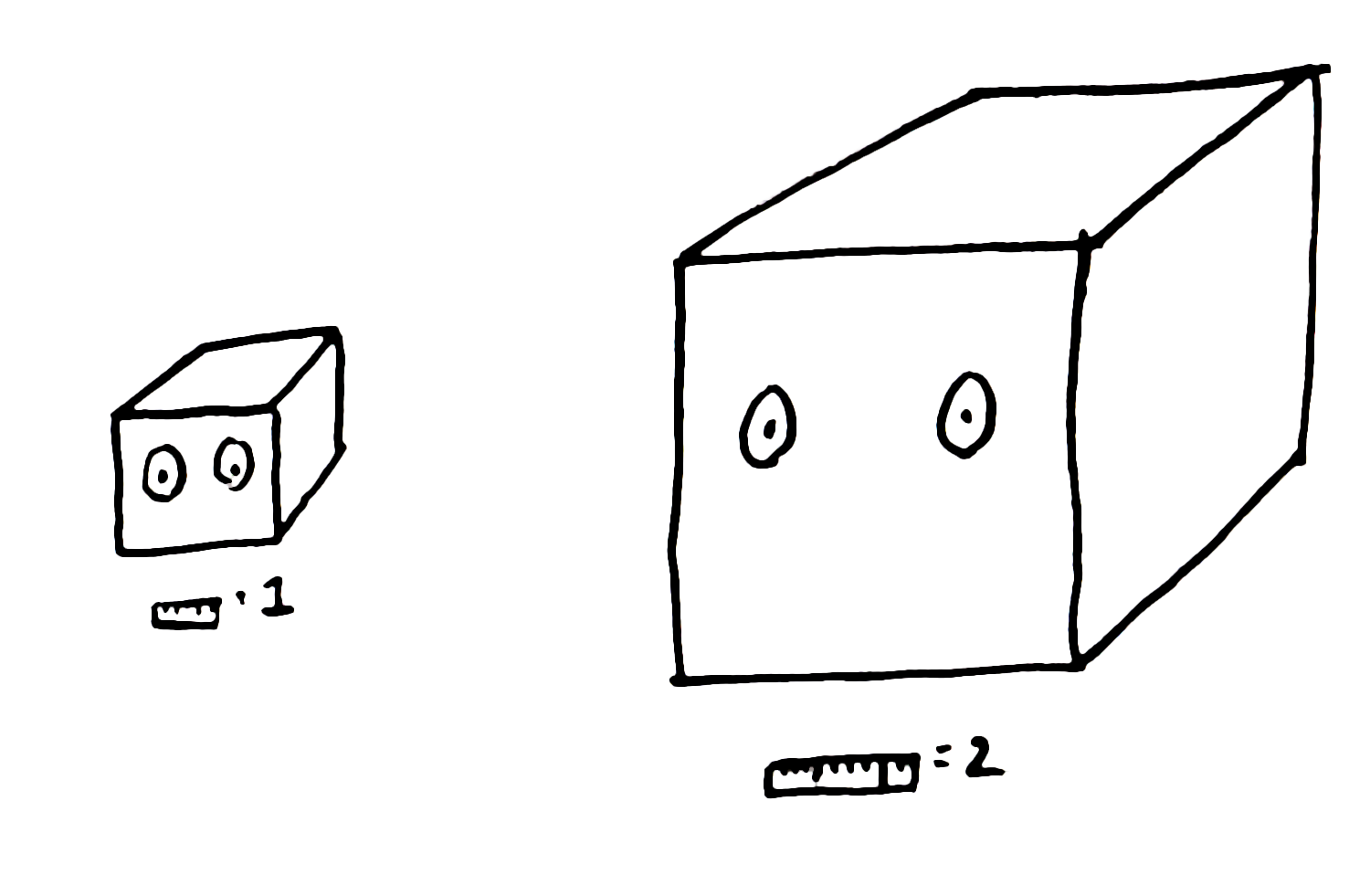
“Judging by a ruler, the big cube is twice the size of the little one. But there’s another way to measure bigness. Suppose we put away the ruler and ask instead, how much paint would you need to paint the surface of the big cube?”
“Well…” says the little mouse, “If the big cube is twice as wide, we’d need twice as much paint to cover it, right?”
“No, that isn’t right,” says the big mouse. “Look closer…”
“See, every face of the big cube has four little faces hiding inside it. So if you’re measuring how much paint you need cover it — its surface area — it’s actually four times as much as the little cube.”
“Hmm… OK, I’m with you so far,” said the little mouse. “But doesn’t this just prove my point? If you have four times as much surface area as I do, you must be leaking four times as much heat. That doesn’t bode well for you, my friend.”
“Well,” said the big mouse. “Here’s the thing. We can measure bigness in yet one more way.”
“There’s another way?” said the little mouse, feeling colder than ever.
“Imagine each cube as a fleshy, warm piece of meat. How many of those warm little cubes of meat could you pack into the big cube?”
The little mouse looked at the big cube and counted the units with his frosty paw, and discovered that when you double the length of a cube, the inside grows… there they are, plain as day… to 8 units of warmth.
“EXACTLY!”, says the big mouse, who can no longer contain its excitement.
“So when an object grows twice in size (as measured by a ruler)…
…its outside surface grows four times bigger,
…and its inside volume grows eight times bigger.”
“That means that even though I — like the big cube — lose four times as much heat as you from my skin, I more than make up for it, because I have eight times as much hot meat inside!! My leaky window might be four times as large as yours, but my furnace is eight times bigger.”
“And so, it’s not me that has to worry about the cold after all, it’s you!” cried the bigger Mouse.” And sad to say, (for all of you who root for little guys), Biggie was right.
The Lesson
The lesson here is very simple: when a creature grows bigger, its insides grow faster than its outsides. (Or, as the math folks say, bigger things have smaller surface area to volume ratio.) You can see this for yourself. Move your cursor over our mouse friend here, and see what happens as it changes size.
So Bergmann’s Rule now makes sense. As animals move into colder latitudes, every extra bit of bigness produces a lot more inside — and the more inside you’ve got, the better your chances of surviving the cold.
As for the fate of our two mice friends, you’ll be happy to learn that they used their new-found knowledge to find a way out of their predicament. They realized that if they both huddle together into a ball, they’ll drop their ratio of surface to volume even further – combined, their heaters outstrip their windows. And so, our brave mice settle their differences, they hug, they cuddle, and together they weather the storm.
Small is leaky.
You can see this idea play out all over the place. When you leave a batch of cookies out to cool, the small ones cool the fastest. Babies have a harder time staying warm than we do, because their surface to volume ratio is much larger than yours or mine. Small things (whether cookies, mice, or babies) lose heat more easily. And this explains why warm-blooded animals are bigger in colder climates.
Now That We Know Bigger Keeps Us Warmer, Turns Out Nature Has Another Strategy. Just As Sly.
There’s another route to warmth. Instead of changing size, what if, instead, you changed your shape? To see how this might work, let’s go back to our cube for a moment. We can rearrange the blocks in a cube into a more slender tower. Both these piles have the same number of blocks, but it’s easy to see that the slender pile has a greater surface area than the squat one.
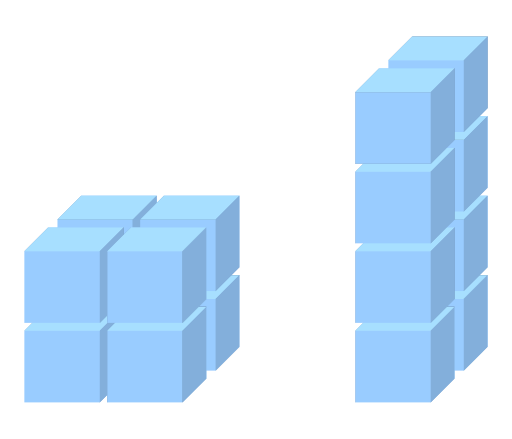
In the squat pile, more of the ‘meat’ is protected on the inside, while in the skinny pile, more of it is exposed. The slender pile leaks more heat than the squat one, while their furnaces are the same size.
So as we go to colder climates, in addition to finding larger animals (Bergmann’s rule), we should also expect to find animals with rounder, stockier bodies and shorter limbs. This latter idea is known as Allen’s rule, after Joel Allen, a 19th century American zoologist. According to Allen, birds and mammals in warmer climates should have longer limbs, ears, tails, snouts, beaks, and so on, the added surface area helping them cool down, while those in colder climates should have shorter limbs, to hold on to their heat.
Rabbits’ ears are a nice example of this rule. As you make your way across North America from Mexico to Alaska, you tend to encounter rabbits and hares with increasingly shorter ears. So in the deserts of Mexico and the Western United States, you’ll find the black-tailed jackrabbit sporting these enormous ears.
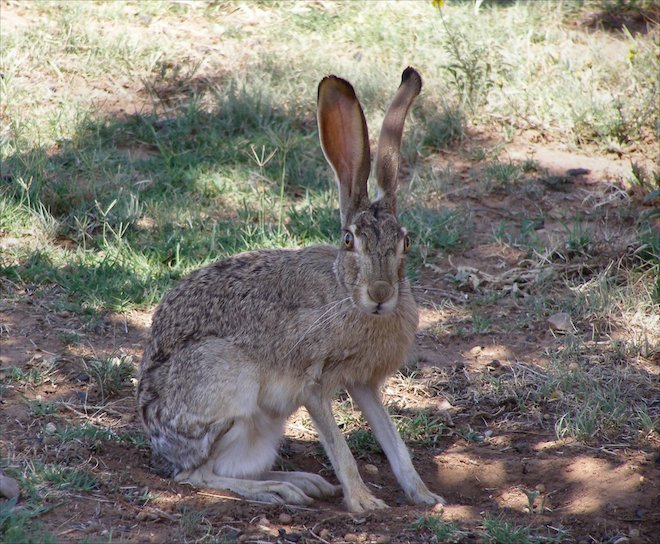
Meanwhile, much further north, up in Canada and Alaska, there lives the snowshoe hare, a creature with shorter ears than most other hares, just as Allen predicted.
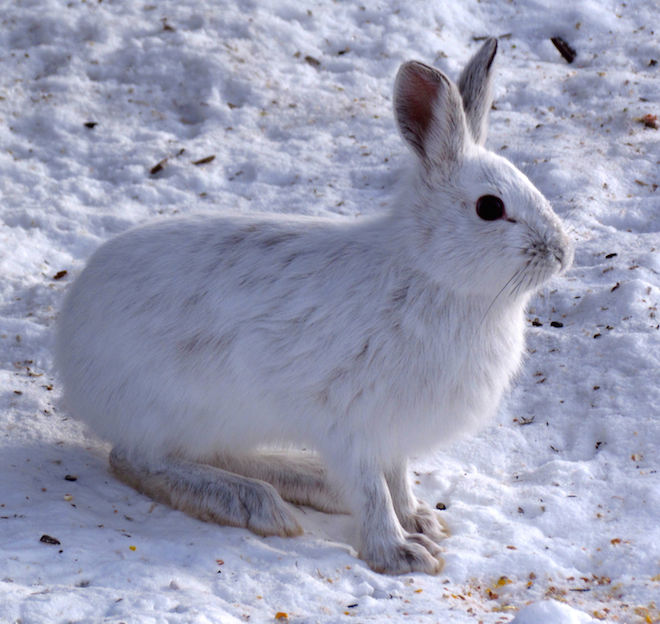
Birds offer some of the clearest evidence for Allen’s rule. A study looking at measurements of 214 bird species found that their beaks get shorter as you go to higher latitudes. So for example, Antarctic penguins tend to have a shorter bills than South African penguins. Toucans high up in the Andes, where it’s cold, have shorter bills than toucans down in the rainforest, where it’s hot. A similar pattern holds for seagulls, wild turkey, and so on.
The explanation for this is that birds use their beaks to lose heat, and a longer beak leaks more heat, a fact that might have been obvious to us if only our eyes could see infrared light. Just take a look at these infrared photos of bird beaks.
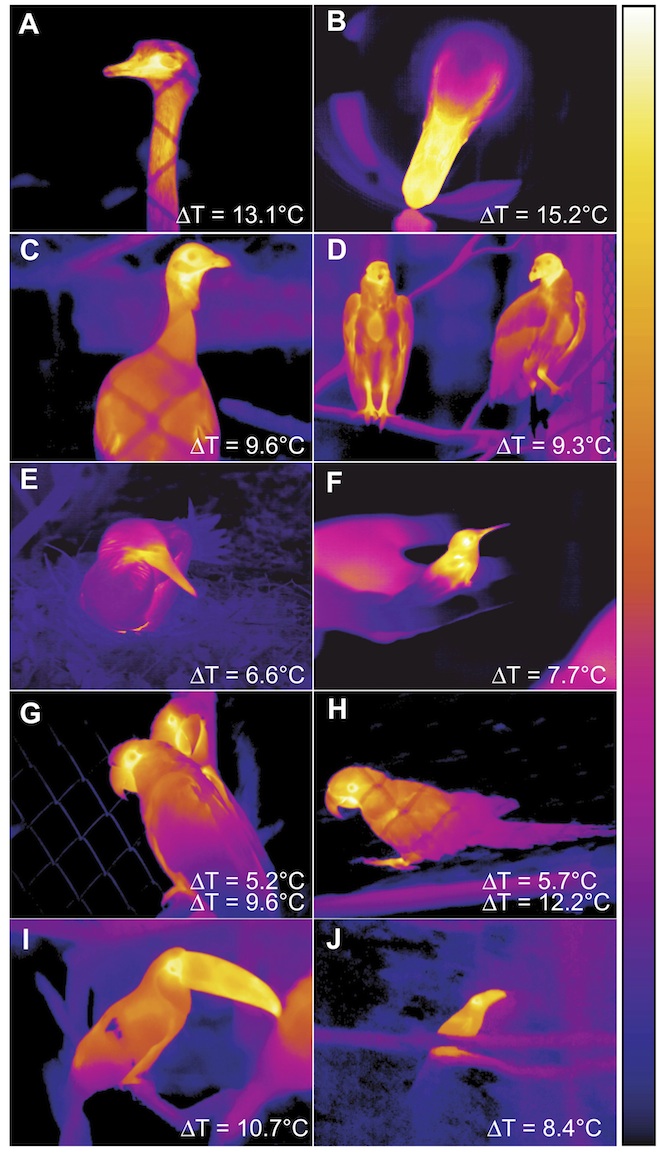
Or check out this infrared video of a toucan, and you can easily see the beak glowing as it radiates heat.
Bergmann’s rule (big vs. small) and Allen’s rule (slender vs. compact) aren’t capital R rules that apply in all situations. Instead, they’re simplified models. The real world is more complex (and more interesting) than the world of cubical mice. In real life, mice run short of food, face droughts, get diseases, get hunted by armies of cats, and can burrow underground for protection. A creature’s size may depend on all these factors, and not just on warmth. Bergmann’s rule has its fans and has its critics, but it’s been used by scientists for 175 years, and is still being used today.
Hey! What About People?
That being said, there’s one mammal we haven’t considered as yet, and that’s us: humans. So do these rules also apply to us as well?
You’d expect that, if these patterns held in humans, people living closer to the tropics should weigh less than people towards the poles (Bergmann’s rule – less mass equals a smaller heater). And their bodies should be more slender, with proportionately longer limbs (Allen’s rule – a larger surface leaks more heat).
In a recent study, researchers surveyed the sizes of 263 different modern human groups believed to have stayed in the same place for (at least) the last 500 years (because recent migrations would scramble these patterns). And they found that, just as you’d expect from Bergmann’s rule, people tended to get heavier as they moved towards the poles, agreeing with previous studies of human size. Meanwhile, many other studies have found evidence for Allen’s idea in humans.

So while these patterns are noisy and hold only on average, there’s evidence to suggest that as humans moved to colder climates (and stayed there for a long time), they developed a heavier and more compact body shape, driven by the need to stay warm. Human populations living close to the poles, like the Inuit, the Aleut people or the Sami people tend to weigh more than people who live at lower latitudes, consistent with Bergmann’s rule. And they have somewhat broader trunks and shorter limbs, consistent with Allen’s rule. In contrast, people adapted to life in the tropics tend to be leaner, with longer arms and legs relative to their size, which helps them stay cool.

Yes, there are lots of exceptions, and you can probably think of a few. Once again, we are not describing a universal law here, it’s just a pattern that shows up so regularly, so often, that despite the exceptions, it bears noticing. The world is full of differently-shaped, differently-sized, differently-sorted animals, and yet, in that jumble of difference there is a pronounced pattern: higher latitudes seem to select bigger and more compact bodies, lower latitudes smaller and leaner ones, and that may be because towards the poles you need to keep yourself warm, towards the equator you need to cool off, and bigger, compact bodies are better when it’s cold out.
The guy who taught us this, Professor David Haskell of Tennessee, could run his own little experiment. If some of his kids were to leave Tennessee for the Arctic and hang out there for another 10,000 years, would they gradually become more compact and thicker? Would the Haskells who stay in Tennessee stay lanky? It would be interesting to find out.
But then again, if the next 100 generations of Haskells are as curious as David, if they do cockamamie things like strip naked on sub-freezing days “to experience the cold as forest animals do,” we’re guessing their chances of lasting ten thousand years become a little… umm… dicey.
Curious animals are a special category. We love them. But try not to include them in long term studies.

